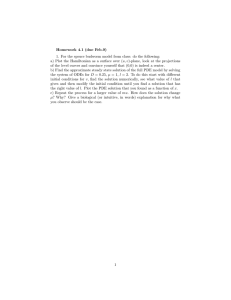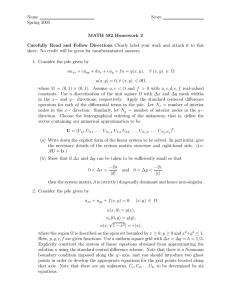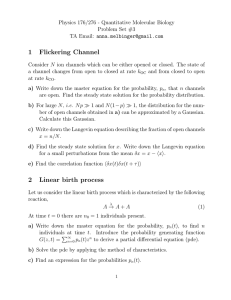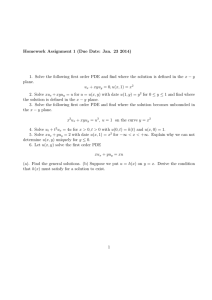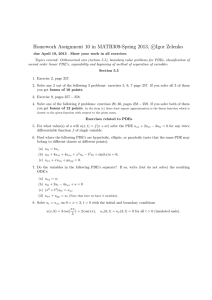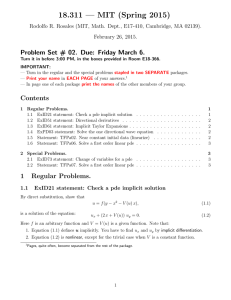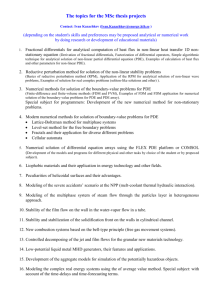Second-order linear equations
advertisement
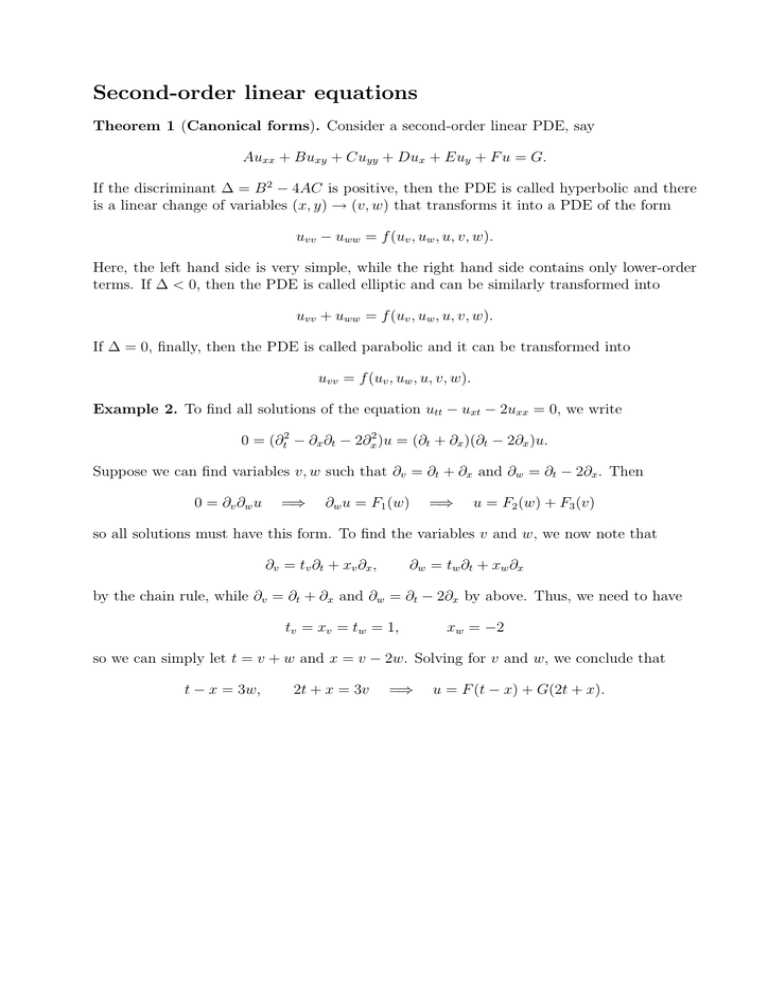
Second-order linear equations Theorem 1 (Canonical forms). Consider a second-order linear PDE, say Auxx + Buxy + Cuyy + Dux + Euy + F u = G. If the discriminant ∆ = B 2 − 4AC is positive, then the PDE is called hyperbolic and there is a linear change of variables (x, y) → (v, w) that transforms it into a PDE of the form uvv − uww = f (uv , uw , u, v, w). Here, the left hand side is very simple, while the right hand side contains only lower-order terms. If ∆ < 0, then the PDE is called elliptic and can be similarly transformed into uvv + uww = f (uv , uw , u, v, w). If ∆ = 0, finally, then the PDE is called parabolic and it can be transformed into uvv = f (uv , uw , u, v, w). Example 2. To find all solutions of the equation utt − uxt − 2uxx = 0, we write 0 = (∂t2 − ∂x ∂t − 2∂x2 )u = (∂t + ∂x )(∂t − 2∂x )u. Suppose we can find variables v, w such that ∂v = ∂t + ∂x and ∂w = ∂t − 2∂x . Then 0 = ∂v ∂w u =⇒ ∂w u = F1 (w) =⇒ u = F2 (w) + F3 (v) so all solutions must have this form. To find the variables v and w, we now note that ∂v = tv ∂t + xv ∂x , ∂ w = t w ∂ t + xw ∂ x by the chain rule, while ∂v = ∂t + ∂x and ∂w = ∂t − 2∂x by above. Thus, we need to have tv = xv = tw = 1, xw = −2 so we can simply let t = v + w and x = v − 2w. Solving for v and w, we conclude that t − x = 3w, 2t + x = 3v =⇒ u = F (t − x) + G(2t + x).
